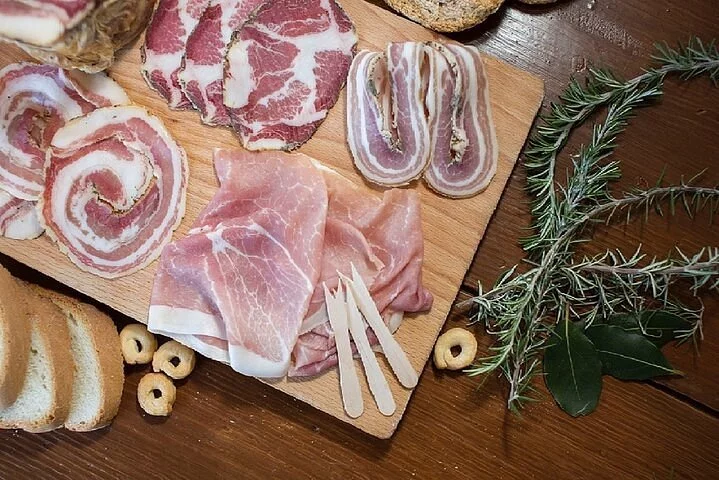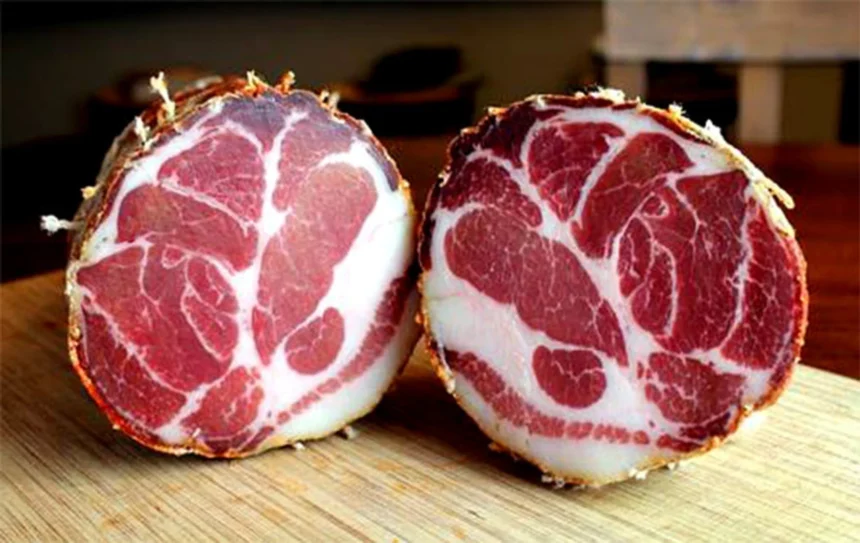In the realm of gastronomy, few culinary delights have experienced a journey as remarkable as Capocollo, transcending its origins as a local delicacy to attain the status of a global culinary star. Hailing from the rich traditions of Italian cuisine, Capocollo, also affectionately known as Coppa or Gabagool, has evolved beyond regional boundaries, captivating taste buds worldwide. This journey involves not just the geographical spread of its popularity but also the adaptation of this cured meat to diverse culinary landscapes.
Origin and Cultural Significance of Capocollo
Capocollo, a traditional Italian cured meat, holds a rich history dating back centuries. Originating from various regions in Italy, including Martina Franca in Apulia and Calabria, Gabagool has deep roots in the country’s culinary heritage. The town of Martina Franca, once part of the Kingdom of Naples in the 18th century, played a significant role in the early production of Gabagool, contributing to its historical prominence.
This delicacy, also known by alternative names such as Coppa and Gabagool, is characterized by its unique preparation method. Unlike ham, Capocollo is not brined, and its distinct flavors make it a versatile ingredient in Italian cuisine, often featured in antipasto courses.
Beyond its regional origins, Capocollo has transcended local boundaries and gained recognition as a global culinary star. Its cultural significance lies not only in its historical ties to specific Italian regions but also in its ability to adapt and contribute to diverse gastronomic landscapes worldwide.
Various names: Coppa, Gabagool
Common alternative names for Capocollo include Coppa and Gabagool. The diverse nomenclature is often influenced by the pronunciation preferences of different Italian-American communities. Additionally, specific varieties of Capocollo may have distinct names, such as Coppa Piacentina and Capocollo di Calabria, which hold protected designation of origin status under the Common Agricultural Policy. This reflects the rich tapestry of Italian culinary traditions, where the same delicacy may be recognized by different names across regions.
Historical Roots Dating Back to Ancient Times
Historical records suggest that the production of Capocollo dates as far back as the early 1800s, showcasing its longstanding presence in Italian culinary traditions. Named after the Italian words ‘capo’ (head) and ‘collo’ (neck), Capocollo signifies the pork parts used in its making. With roots in Italy’s culinary history, cured meats have been a staple for centuries.

Varieties like spicy Gabagool add to the diverse array of Italian cured meats, each with its unique historical background.
The Making of Capocollo
Capocollo, a traditional Italian cured meat, involves a meticulous process in its creation. While specific recipes may vary, the general steps for making It include:
- Selection of Meat: Choose high-quality pork shoulder or neck for the Gabagool.
- Trimming and Seasoning: Trim excess fat and skin, then season the meat with a blend of salt, sugar, and various spices such as black pepper, paprika, and garlic.
- Curing: Rub the seasoned meat with curing salts and let it cure for several days. This process imparts flavor and preserves the meat.
- Drying: Hang the cured meat to air-dry, allowing it to develop a characteristic crust.
- Aging: Age the Capocollo in a controlled environment for an extended period.
- Slicing and Serving: Once aged, slice the Capocollo’s thinly for serving. It can be enjoyed on its own, in sandwiches, or as part of charcuterie boards.
Various online resources, such as Taste of Artisan, Glen and Friends Cooking, ByLena.com, and Furious Grill, provide detailed recipes and tutorials for making Capocollo at home.
Regional Variations of Coppa
Coppa exhibits regional variations, notably from Piacenza and Calabria.
- Capocollo from Piacenza:
- PDO Status: Capocollo from Piacenza holds the prestigious EU Protected Designation of Origin (PDO) status, signifying its adherence to specific production methods and regional origin.
- Capocollo di Calabria:
- PDO Status: Capocollo di Calabria is another variety with PDO status, emphasizing its traditional production methods tied to the Calabrian region.
- Traditional Uses: In Calabrian cuisine, It is utilized in various ways. Its rich, cured flavor makes it suitable for antipasti, sandwiches, and as a key ingredient in regional dishes.
These regional distinctions and protected statuses underscore the importance of geographical origin and traditional practices in the production of Coppa.
Culinary Significance
Coppa, a cured meat with protected designations like PDO (Protected Designation of Origin), holds immense culinary significance in Italian cuisine.
- Incorporation in Pasta Dishes:
- Coppa is often featured in pasta dishes, adding a rich and savory flavor to classic recipes such as tagliatelle al ragù.
- Traditional Recipes and Cultural Importance:
- The culinary heritage of Coppa is deeply rooted in traditional recipes, reflecting regional variations like Capocollo di Calabria with its PDO status.
- Its presence in Italian cuisine showcases the importance of preserving traditional methods and flavors, contributing to the cultural identity of different regions.
Capocollo’s integration into pasta dishes and its role in traditional recipes highlight its versatile and esteemed position in the diverse landscape of Italian culinary traditions.
How Coppa Is Made: Visual Insight
Coppa in Modern Context
It has gained global popularity, finding its place in international cuisines and diverse recipes. In the modern context:
- Popularization in International Cuisines:
- It has transcended its Italian origins and become a sought-after ingredient in various international cuisines. Its unique flavor and texture contribute to its global appeal.
- Integration into Diverse Recipes Worldwide:
- Chefs and home cooks worldwide have embraced Coppa, incorporating it into a myriad of recipes. From pasta dishes to sandwiches and charcuterie boards, its versatility shines in diverse culinary creations.
- Commercial Availability:
- It is commercially available in specialty stores, delis, and online platforms. Its accessibility allows enthusiasts to explore and experiment with this flavorful cured meat.
- Leading Producers and Distributors:
- Notable producers and distributors, such as Rotella’s Italian Bakery, play a significant role in providing high-quality Coppa to the market, ensuring its availability for consumers worldwide.
Capocollo’s journey from a regional Italian delicacy to a globally cherished ingredient reflects its adaptability and the evolving tastes of the modern culinary scene.



